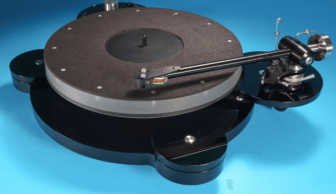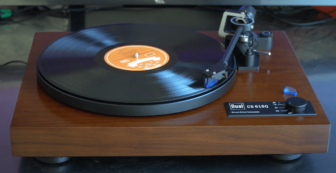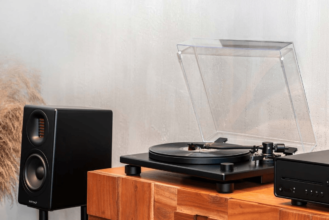Thorens TD 124 DD Review
Thorens have completed their first “big” turntable. And it has become an excellent reference to the rich heritage of the company.
Yes, it is true. I was one of them. One of those who, at least in spirit, threw their hands up in horror at the presentation of the direct-drive new edition of the Thorens friction wheel drive that reigns at the very top of the classics Olympus. What blasphemy! How can one burden His Majesty, the holy TD 124, with such an embarrassing successor? In the meantime, I can say with a clear conscience: Nothing about the TD 124 DD is embarrassing.
On the contrary, when Gunter Kurten unpacked the first-ever built unit of the limited series in our listening room and put it into operation, it commanded my respect. Not only for the owner of the company but also for the engineering of the machine. It incorporates a lot of clever solutions, some have been carried over from the original model and some have been freshly conceived.
The external power supply unit provides the electronically stabilized operating voltages for the TD 124 DD
Christmas and the turn of the year lie behind us, and I have spent a lot of time with the TD 124 DD at home. This thing, folks, is not a toy. I say that from the perspective of someone who has never owned an original TD 124, so the comparison between the two concepts could at best be drawn from a theoretical perspective. But I don’t have to because the new model speaks for itself – with a clear, loud, and distinctive voice. Of course, we can’t completely get away without cautiously squinting at perhaps the most famous of all “Thorenses” from time to time. If only because one could almost mistake the original unit for the “DD” at first glance. Only the new one‘s external power supply reminds us that turntables are built a little differently nowadays than in 1957 when the TD 124 story began.
First of all, let’s clear up an urban legend: The TD 124 was by no means a classic friction wheel drive turntable, but a so-called combination drive. In other words, one in which the friction wheel was not driven directly by a motor but by an intermediate belt drive. This was the only way to reduce the inevitable rumble caused by the friction wheel principle to an acceptable level. Therefore: Don’t be so fussy. Most likely, the DD’s powerful direct drive even creates more torque at the disc axle than the old-timer with its two-stage solution.
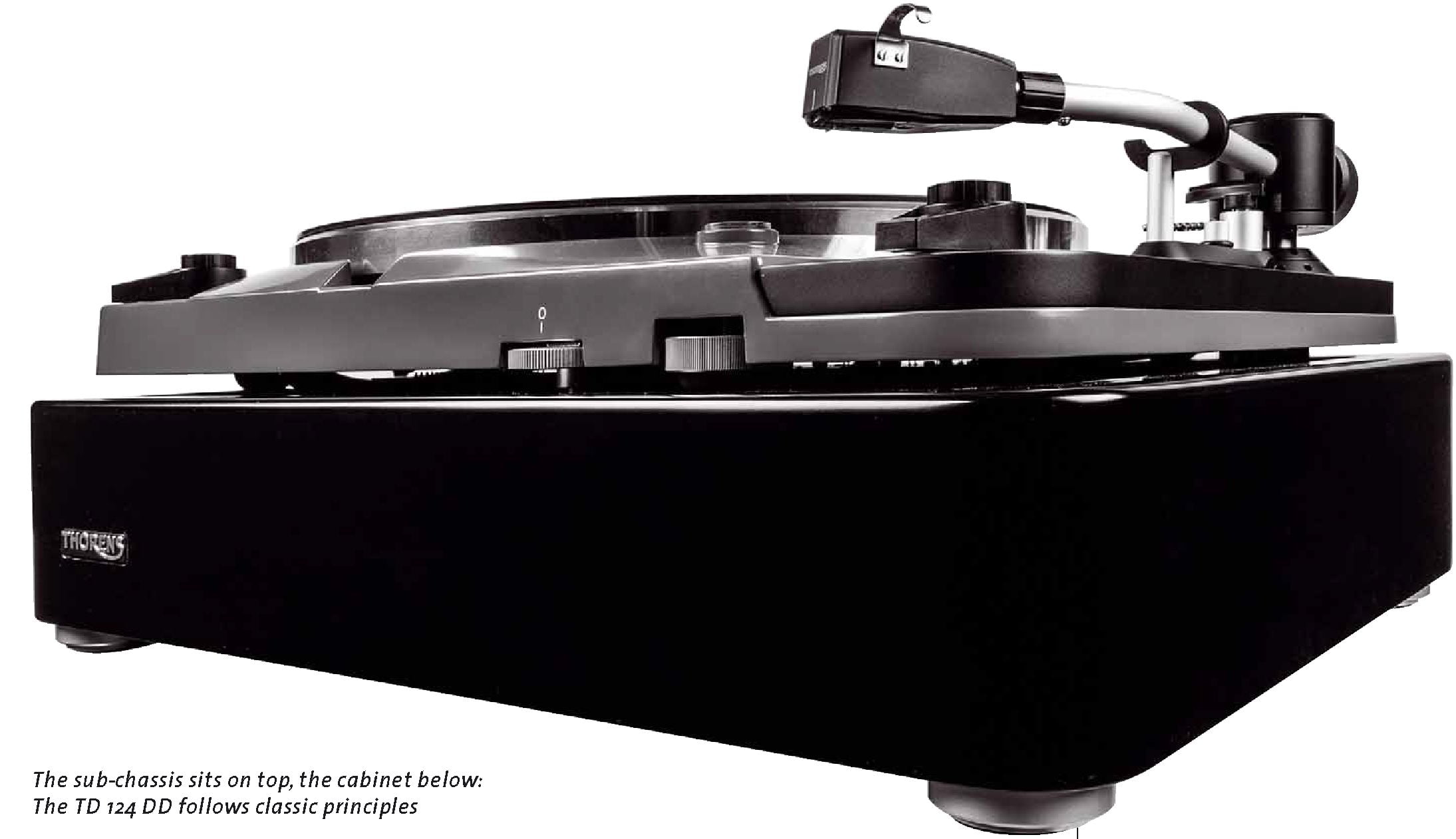
As a TD 124 newcomer, I first noticed the compact appearance of the device. 42.5 centimeters in width and 35 centimeters in depth, in the age of expansive vinyl altars, these are very modest dimensions that undoubtedly make it easier to accommodate the 17 kilograms and 8000 Euro device. Fortunately, the DD isn’t particularly sensitive when it comes to placement. In my case, it rested for weeks on a very unspectacular spruce shelf, which was at first intended for wall mounting. Impact noise sensitivity was surprisingly low, although the whole thing was sitting on a hardwood floor. I was pleased with that solution, but I have to admit that the “TAB 1600” base, which costs 169 euros, improves the decoupling from the floor even more. Just between us: I would treat myself to the two-layer plate, where at least one layer consists of porous absorber material.
Of course, the TD 124 DD is a real subchassis player. However, the aluminum chassis rests on four elastomer elements, not springs like in the old days. If there had been such high-quality vibration damping materials in the 1950s, the original 124 would probably be conceived using them. Each of the four bearing points is adjustable in height using an external screw. With three bearing points, the whole thing would be a little easier to bring into a horizontal position, but with a bit of feeling, it’s also fine with this solution. To control the alignment, the circular level embedded in the sub-chassis provides valuable services. The touch and feel of all components of the TD 124 DD is excellent and appropriate for the asking price in every respect. Also, I must say it once again: If you give a manufacturing company based in the
Teammates
Phono preamp:
Malvalve preamp three phono
Integrated amplifier:
Riviera Levante
Preamlifier:
NEM PRA5
Power amplifier:
Silvercore Collector’s Amp
Loudspeaker:
Dynamikks Monitor 10
DIY Focal / JBL
Compatitors
Record player:
TechDAS Air Force III / Reed 3p / Skyanalog G-2
Levar Ultimate /
Ultimate Carbon 12″ / Skyanalg G-3

What we played
Paul Kuhn Trio
Live At Birdland
Tsyoshi Yamamoto Trio
Misty
Neil Young
At Massey Hall
Mogwai
Come On Die Young
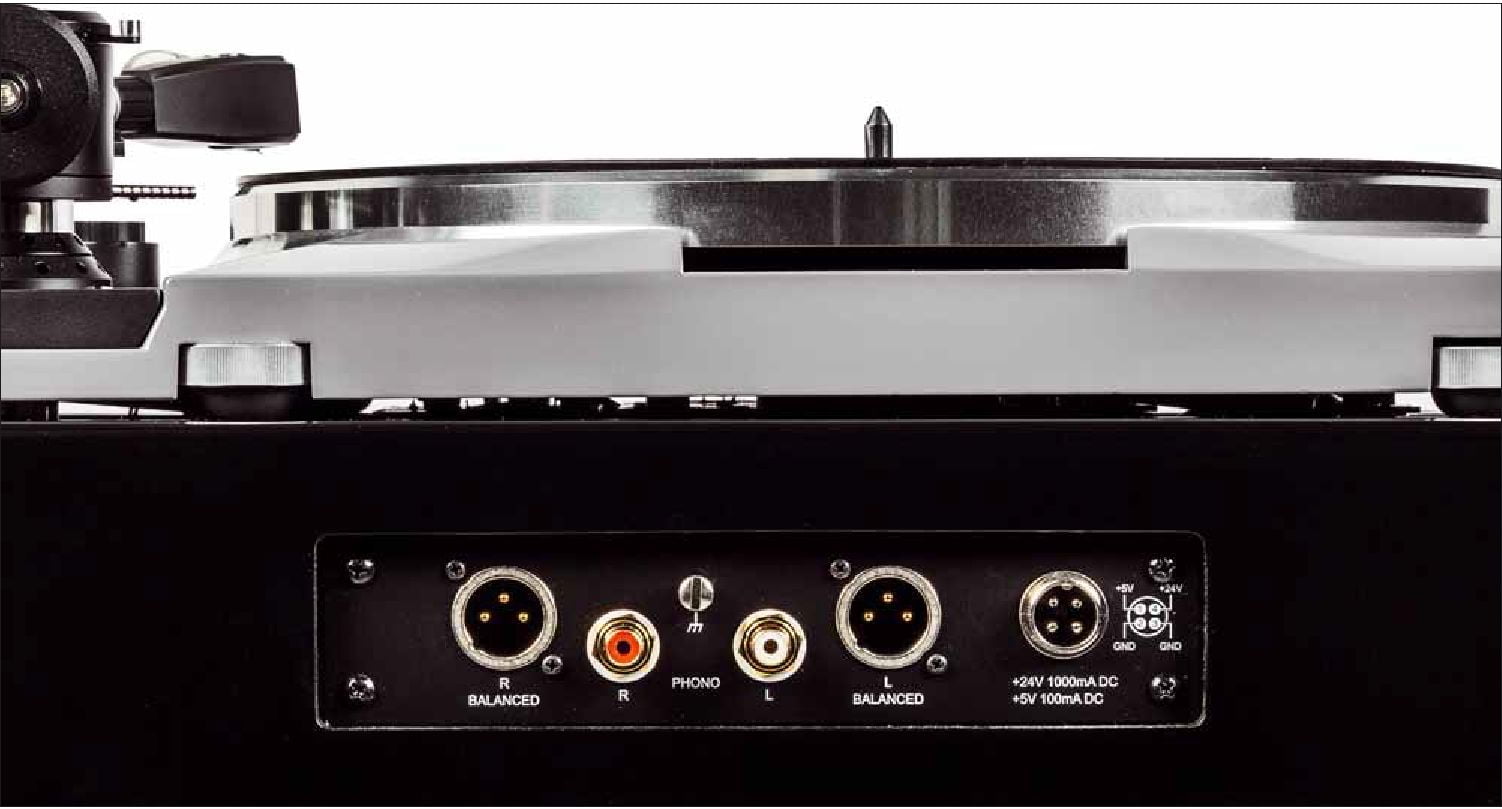
Remarkable: There are even true balanced output sockets
Far East enough money for the job, then the results can be absolutely on par with “real” Made In Germany. Under the three-and-a-half kilogram aluminum platter of the device, the drive shows up: The direct drive motor sits far on the inside and thus far away from the pickup area, which is potentially vulnerable to magnetic fields. The motor’s design with its vertically arranged magnets and coils is not entirely unknown and is reliably used in a whole series of famous “high-speed starters” in the DJ scene. The TD 124 DD is not capable of such tricks due to its heavy platter, but it nevertheless reaches its rated speed very quickly. The speed is selected via a switch on the front left corner of the turntable. There is another lever on the far left side, which is based on the disc brake of the original TD 124. This one, however, does not intervene mechanically but stops the platter electrically. This proved to be very practical when turning over a plate, and I quickly got used to it. The DD’s platter carries a strobe marking on the outside visible through a small window and illuminated by a strobe light. A dial on the device’s front edge allows fine adjustment of the platter speed, which proved to be constant over the test period.
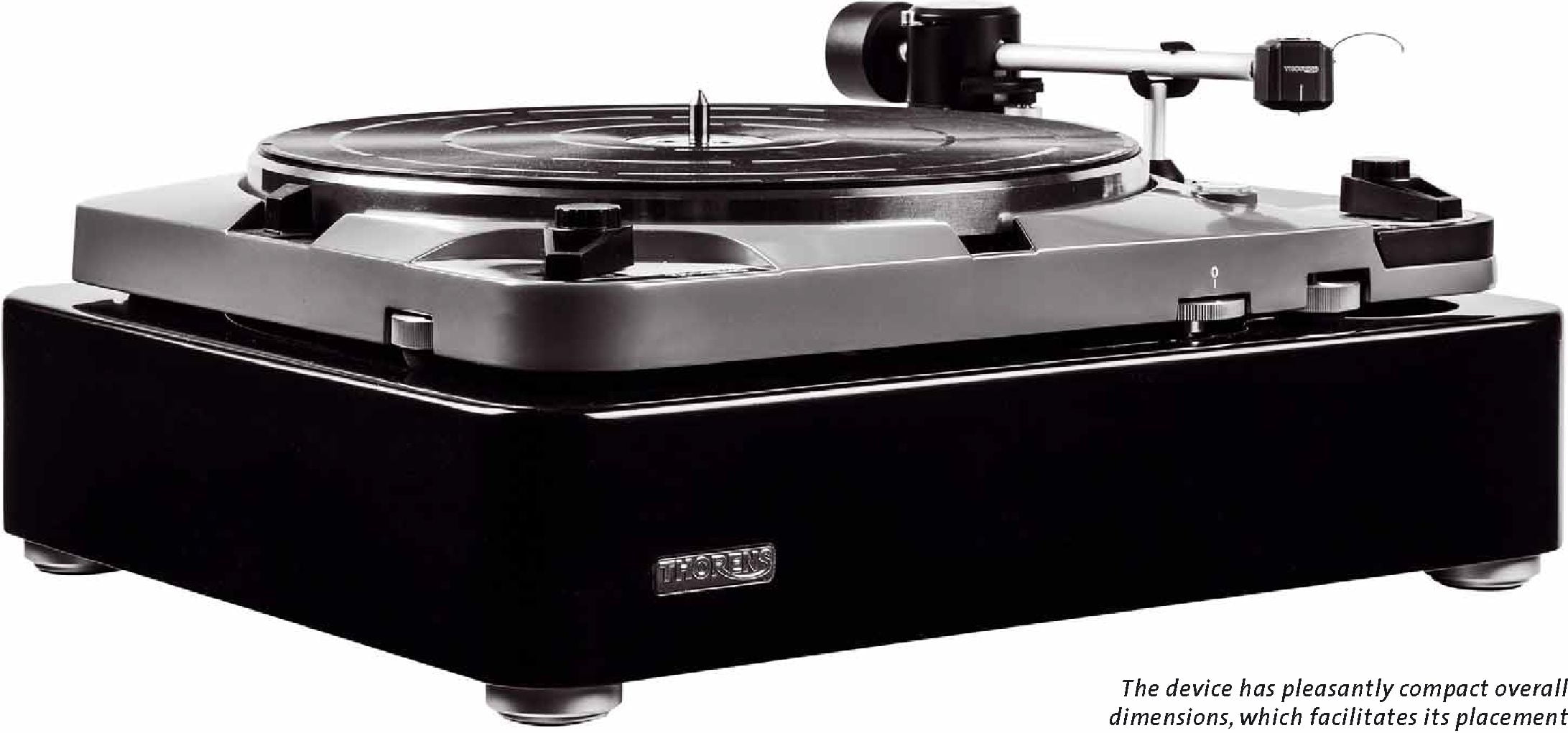
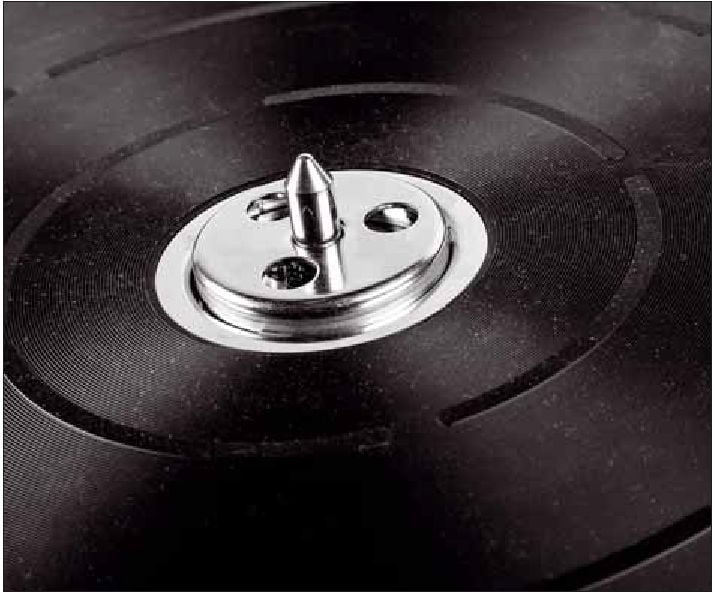
The retractable singles adapter is integrated into the plate
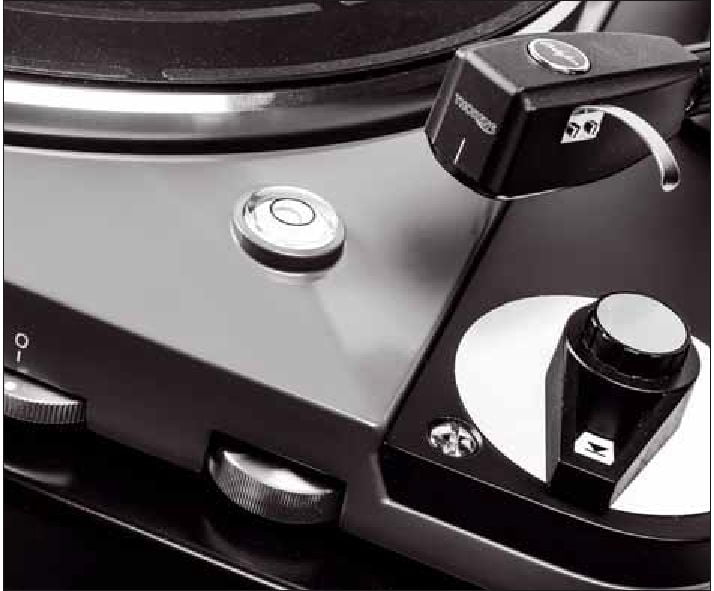
The knob on the right controls the electric tonearm lift. At the bottom center of the picture, you can see one of the knurled wheels for height adjustment

The lever on the left side is the very practical disc brake
The TD 124 DD is equipped with a dedicated tonearm called TP 124 as standard, which is an entirely new design visually inspired by classic models. The nine-inch arm, fitted with a J-shaped bent aluminum tube, carries an SME bayonet at the front end and, with an effective mass of 15 grams, falls right into the “mediumweight” category. Very nice: the anti-skating solution with thread and counterweight, where the weight does not dangle on the side for once but disappears inside the device through a hole in the arm base. A ruby ring ensures virtually friction-free thread guidance. The tracking force is first calibrated by adjusting the counterweight (two models of different weights are included). Once the cartridge is balanced, the spring-loaded adjustment via a lever on top of the tonearm bearing housing is used to efficiently, delicately, and flawlessly set the nominal value.
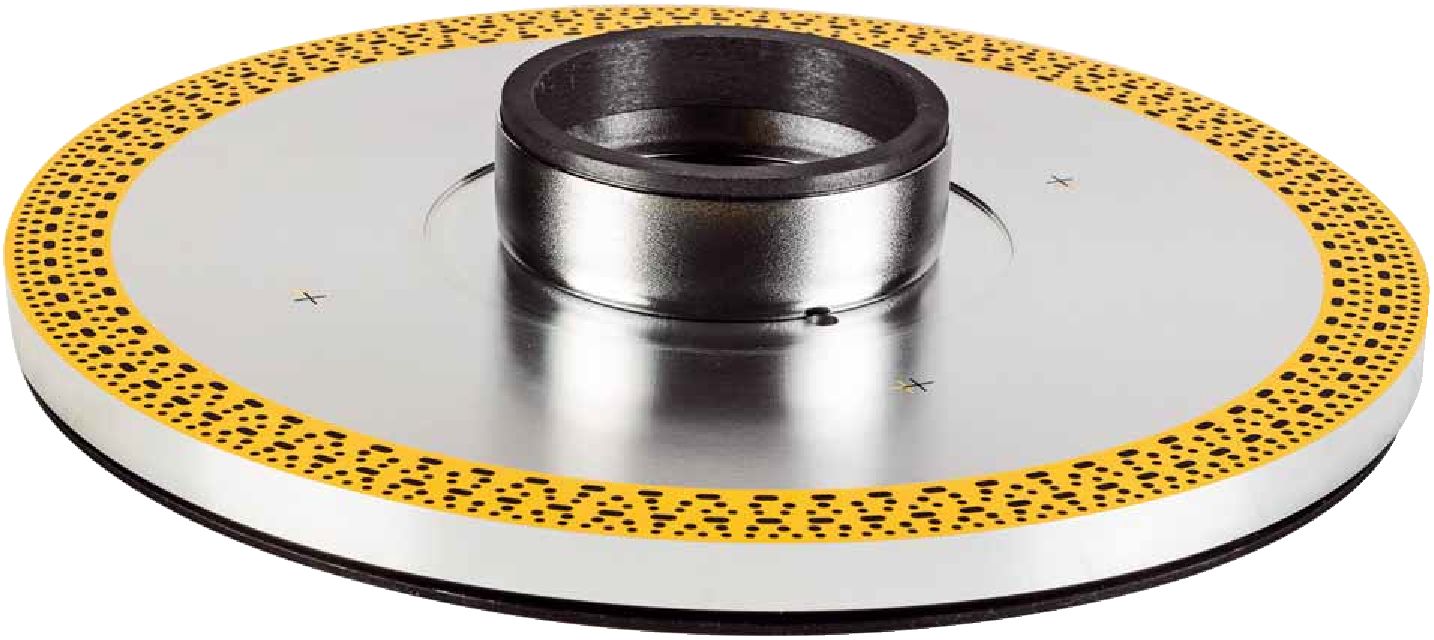
The 3.5-kilo aluminum platter carries the rotor for the direct drive inside
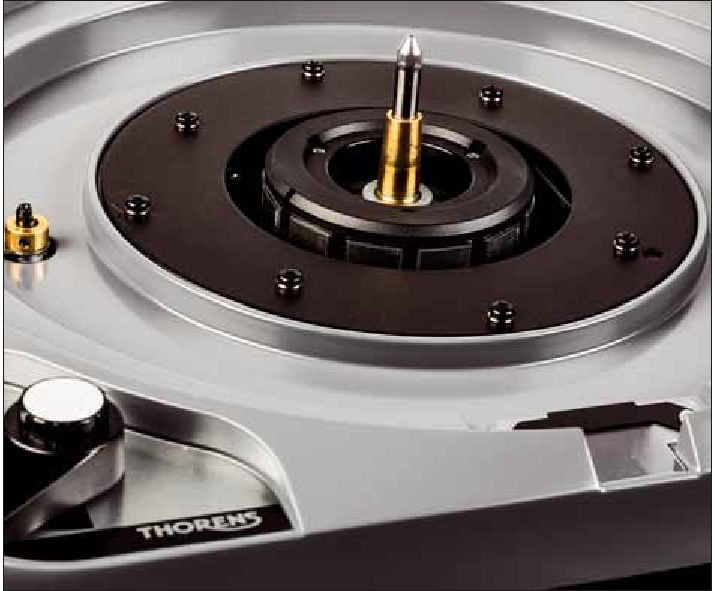
The drive concept is closely modeled on the one used in DJ turntables
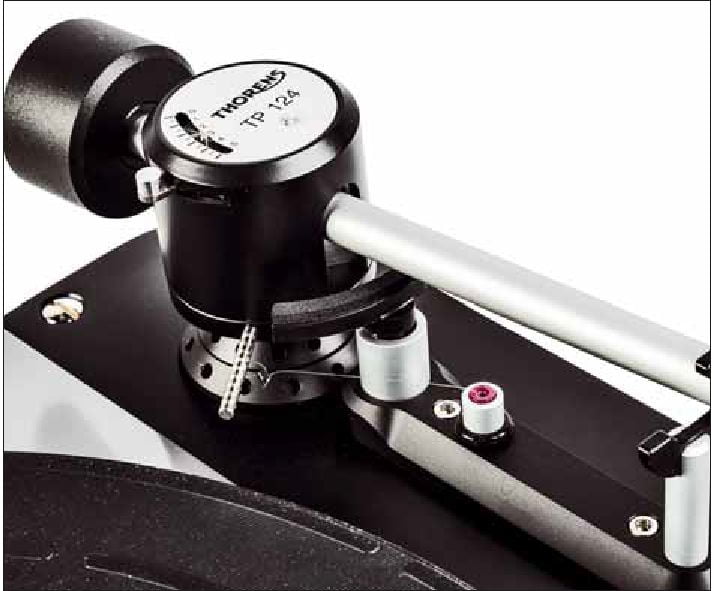
The TP 124 tonearm features a few clever design details – like the recessed anti-skating weight
The TD 124 DD has a feature that we already know from the TD 1601 model, namely an electric tonearm lift. It is operated by a toggle switch on the front right and does precisely what it is supposed to. Admittedly, I wouldn’t mind if it did it a bit more swiftly and quietly, but that’s a luxury problem. You can order the TD 124 DD with two different pickups if desired. We have already presented the modern MC called TAS 1600 for a 1200 Euro extra charge in a bundle with the TD 1601. Alternatively, there is a genuine SPU called “SPU TD 124” for 2000 Euro. As transparent, tonally correct, and nuanced as the TAS 1600 sounds – I cannot deny that the SPU has taken my heart by storm. And it is, in fact, a carefully modernized version of the Ortofon classic with an elliptical needle profile, relatively high output voltage (0.5 millivolts), something like actual needle compliance (8pm/ mN) and a recommended tracking force of 25-35mN. With a generator resistance of two ohms, it can be used excellently with transformers and feels very at home with only ten times the gain.
Even with the TAS 1600, the Thorens unit cannot deny its high-torque drive borrowed from the DJ camp: This thing just gets going unlike anything else. Let’s take the superb Paul Kuhn recording “Live At Birdland” from 2010, which shows the entertainer at his best. Things are swinging beautifully here, with superbly sorted stage separation and subtle cymbal work. The piano action is precise and to the point -this is entertainment at its best. The SPU, however, once again brings tears to my eyes on this record. It sounds a bit more grounded in timbre, perhaps doesn’t act quite as refined and subtly articulated up top, but it’s – well, live. It is a bit scruffy, with unparalleled thrust, heft, gut, and a matter-of-factness that is second to none. I even ventured into Japanese Three Blind Mice jazz in the guise of “Misty”, just for sheer effect: DD and SPU deliver a dynamic folly here that I’ve rarely experienced. Such a bone-hard piano with so much power isn’t an easy thing to reproduce on vinyl. Smoothness and feeling are also possible: Neil Young’s 1971 Massey Hall concert proves once again to be a fragile masterpiece of zeal, the emotionality of which is served up by this team in an outstandingly haunting manner.
Holger Barske


• Price | from ca. 8.000 Euro |
• Sales | Thorens, Bergisch Gladbach, Germany |
• Phone | +49 22048677720 |
• Internet | thorens.com |
• Warranty | 2 years |
• W x H x D | 425 x 185 x 350 mm |
• Weight | ca. 17 kg |
Verdict
What a resurrection! The TD 124 DD is compact, convenient to use, and sounds exceptionally crisp, powerful, and emotional. A big extra plus goes to the fantastic Thorens SPU.




